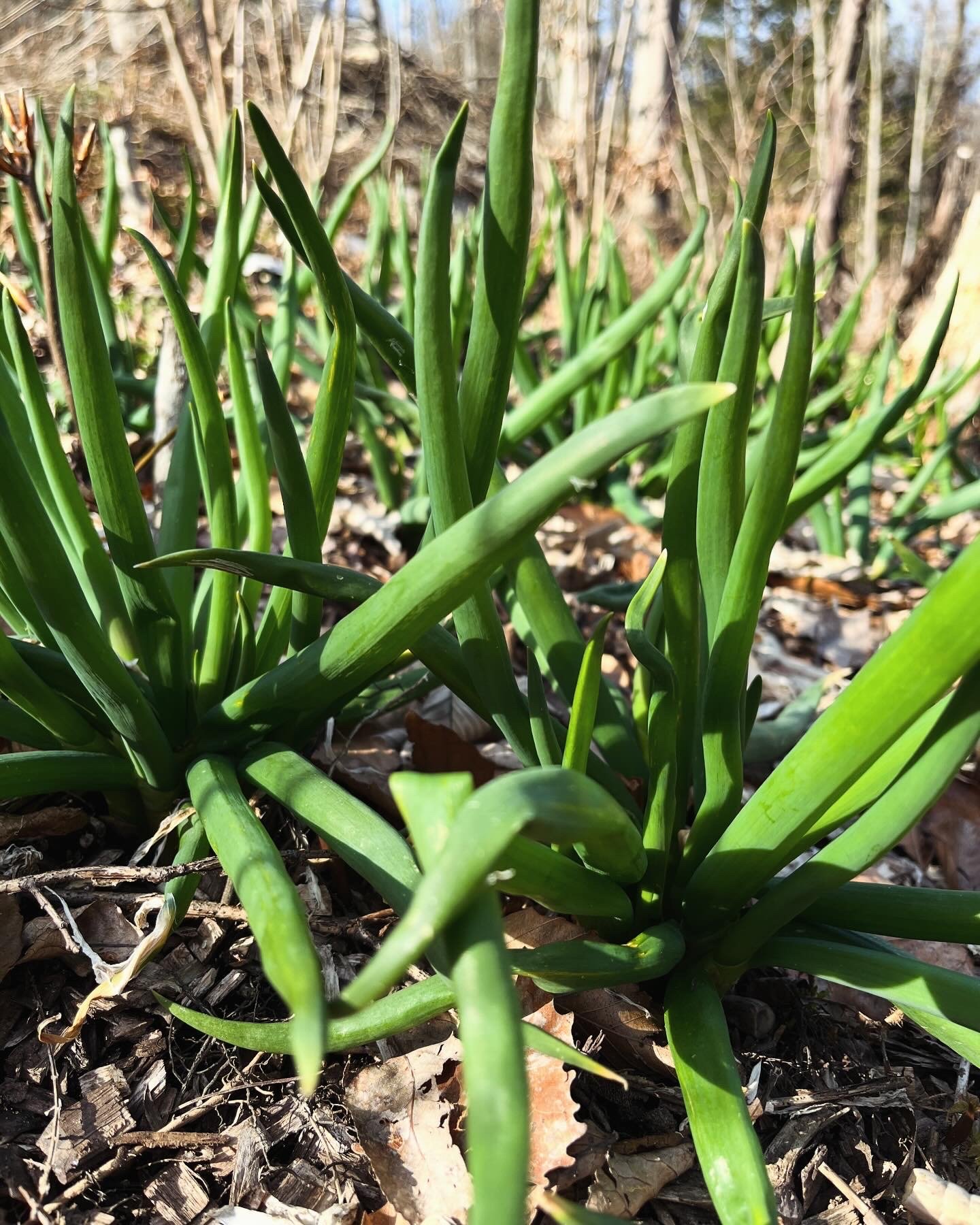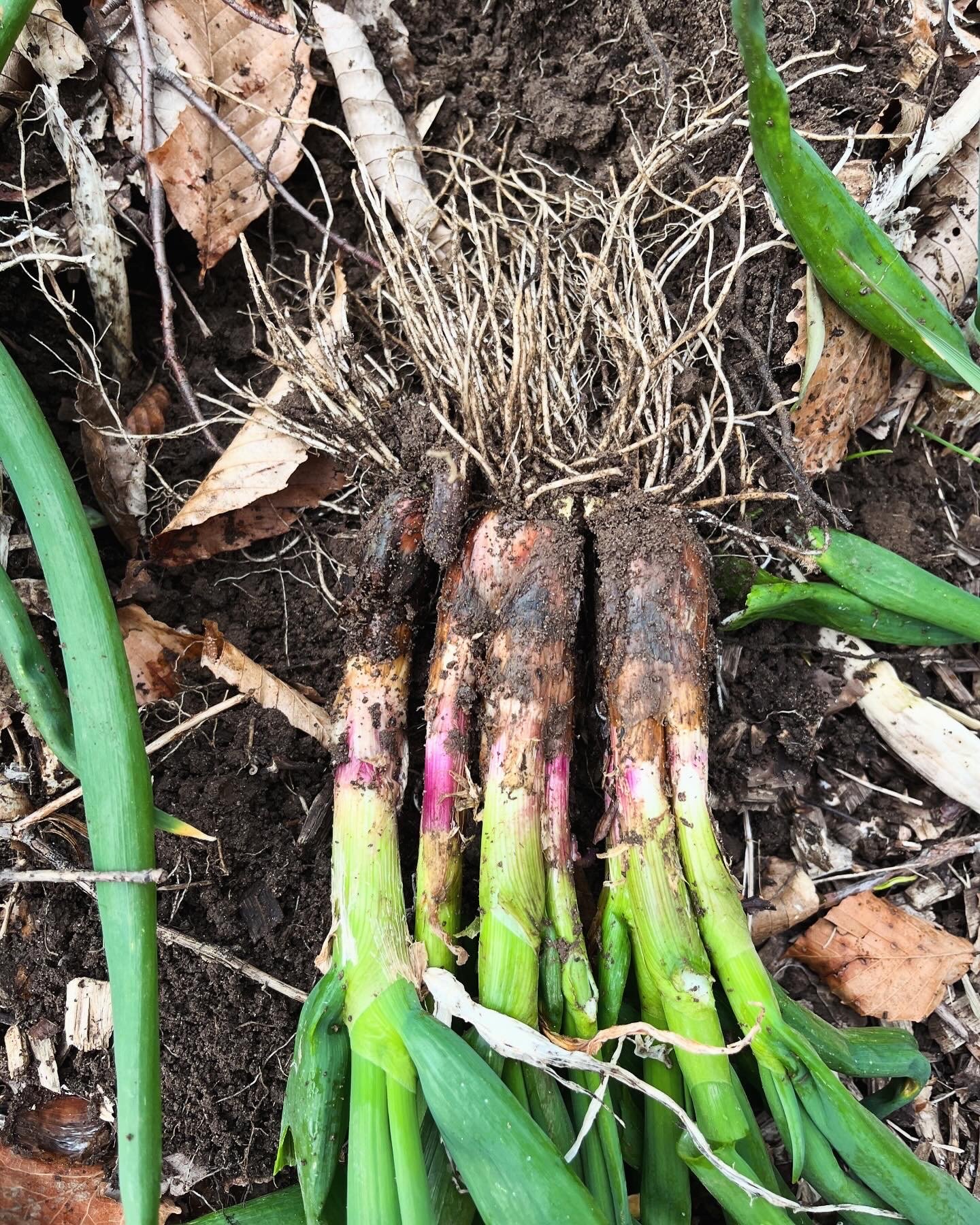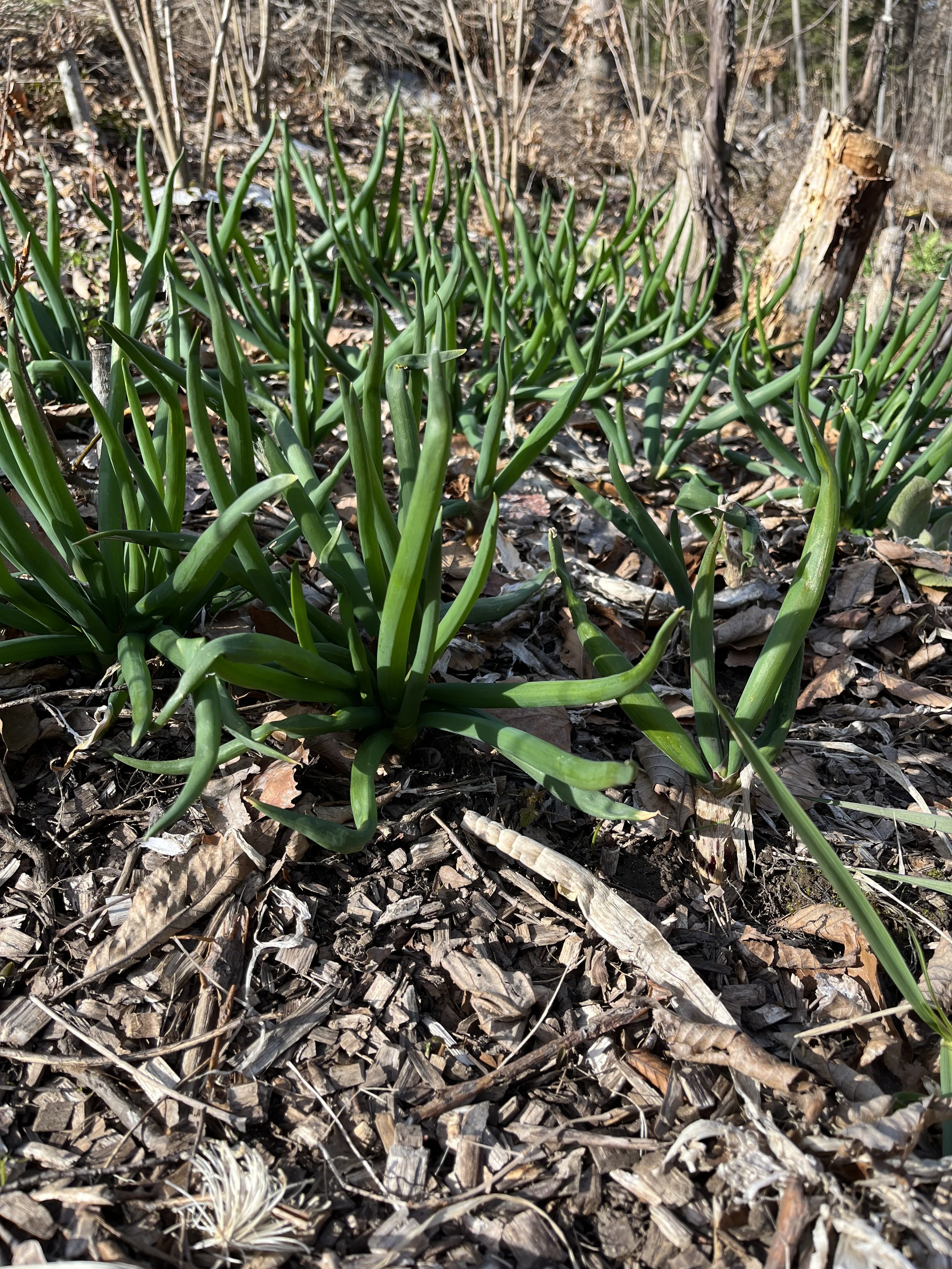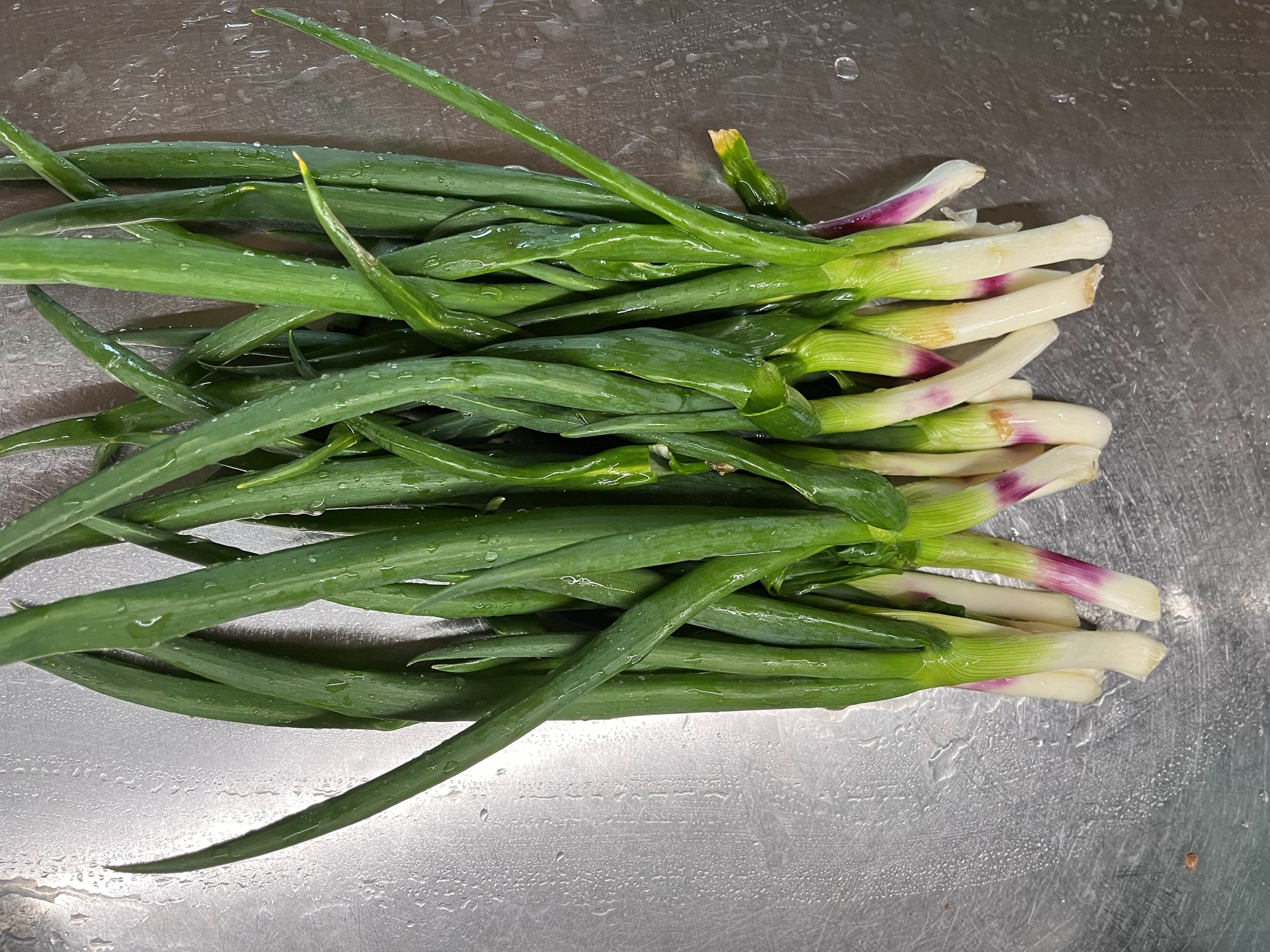Altai Onion ‘Baikal’
3 or more bulbs for planting
Allium altaicum ‘Baikal’
Over the past several years we have been seeking out allium alternatives to replace the conventional biennial onions we love to eat, but find very burdensome to grow. Starting onions from seed under lights indoors in early spring, then transplanting them one by one is just too much work! Alliums that can be direct seeded or propagated by division/topsets are much easier.
Altai onion(“Wild Onion" or “Luk Altaiskii”) is super cold hardy and easy to grow from divisions. It also loves to produce seed, and preliminary experiments with direct seeding in early spring have been promising. Altai onion rivals Walking Onions as one of the first green shoots to come up in late winter/ early spring. We harvest/divide in the spring and find the flavor to be mild and delicious, not the spicy strong flavor we expected from a wild allium variety. The bulbs and leaves are edible. Altai onion is the wild ancestor from which the bunching onion (scallion) was domesticated, so it is meant to be eaten fresh and not stored. Seed for this selection came originally from the Baikal Lake region, southern Siberia, Russia.
3 or more bulbs for planting
Allium altaicum ‘Baikal’
Over the past several years we have been seeking out allium alternatives to replace the conventional biennial onions we love to eat, but find very burdensome to grow. Starting onions from seed under lights indoors in early spring, then transplanting them one by one is just too much work! Alliums that can be direct seeded or propagated by division/topsets are much easier.
Altai onion(“Wild Onion" or “Luk Altaiskii”) is super cold hardy and easy to grow from divisions. It also loves to produce seed, and preliminary experiments with direct seeding in early spring have been promising. Altai onion rivals Walking Onions as one of the first green shoots to come up in late winter/ early spring. We harvest/divide in the spring and find the flavor to be mild and delicious, not the spicy strong flavor we expected from a wild allium variety. The bulbs and leaves are edible. Altai onion is the wild ancestor from which the bunching onion (scallion) was domesticated, so it is meant to be eaten fresh and not stored. Seed for this selection came originally from the Baikal Lake region, southern Siberia, Russia.
3 or more bulbs for planting
Allium altaicum ‘Baikal’
Over the past several years we have been seeking out allium alternatives to replace the conventional biennial onions we love to eat, but find very burdensome to grow. Starting onions from seed under lights indoors in early spring, then transplanting them one by one is just too much work! Alliums that can be direct seeded or propagated by division/topsets are much easier.
Altai onion(“Wild Onion" or “Luk Altaiskii”) is super cold hardy and easy to grow from divisions. It also loves to produce seed, and preliminary experiments with direct seeding in early spring have been promising. Altai onion rivals Walking Onions as one of the first green shoots to come up in late winter/ early spring. We harvest/divide in the spring and find the flavor to be mild and delicious, not the spicy strong flavor we expected from a wild allium variety. The bulbs and leaves are edible. Altai onion is the wild ancestor from which the bunching onion (scallion) was domesticated, so it is meant to be eaten fresh and not stored. Seed for this selection came originally from the Baikal Lake region, southern Siberia, Russia.



